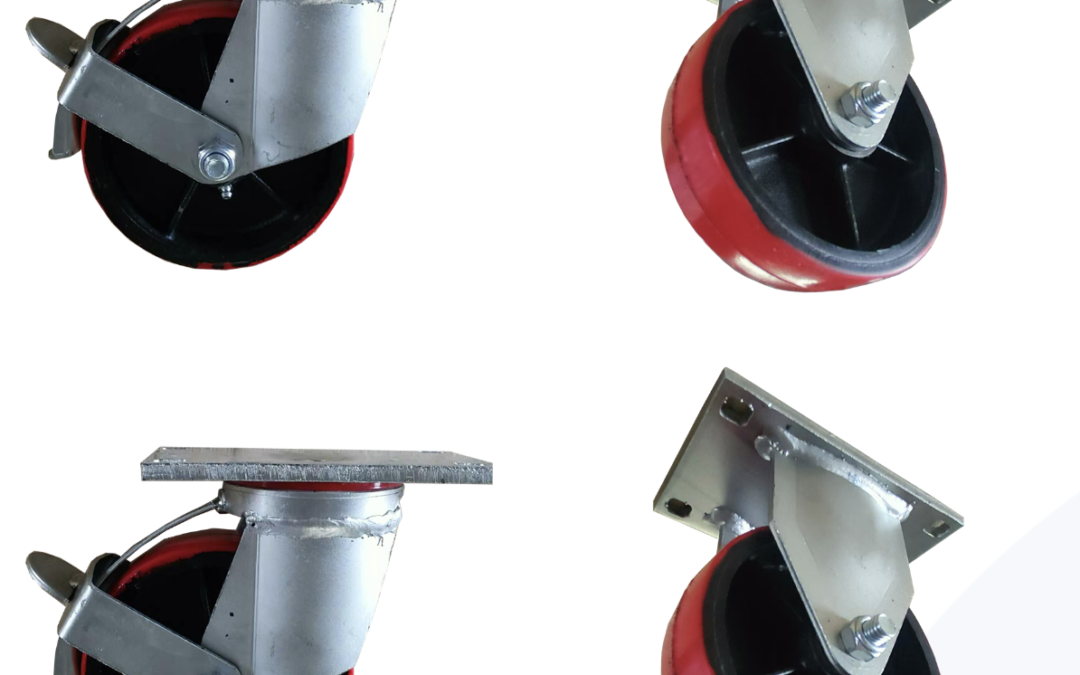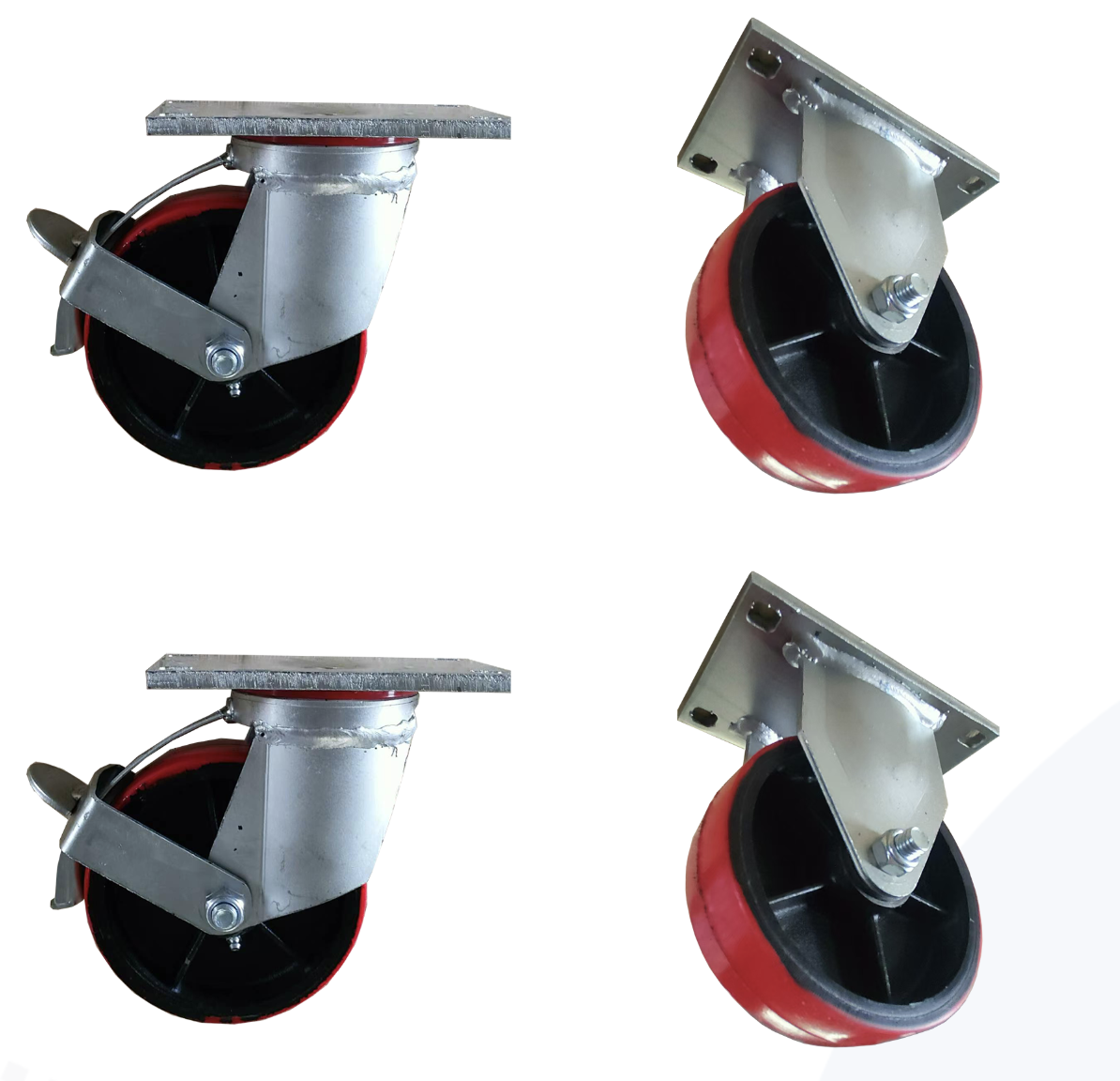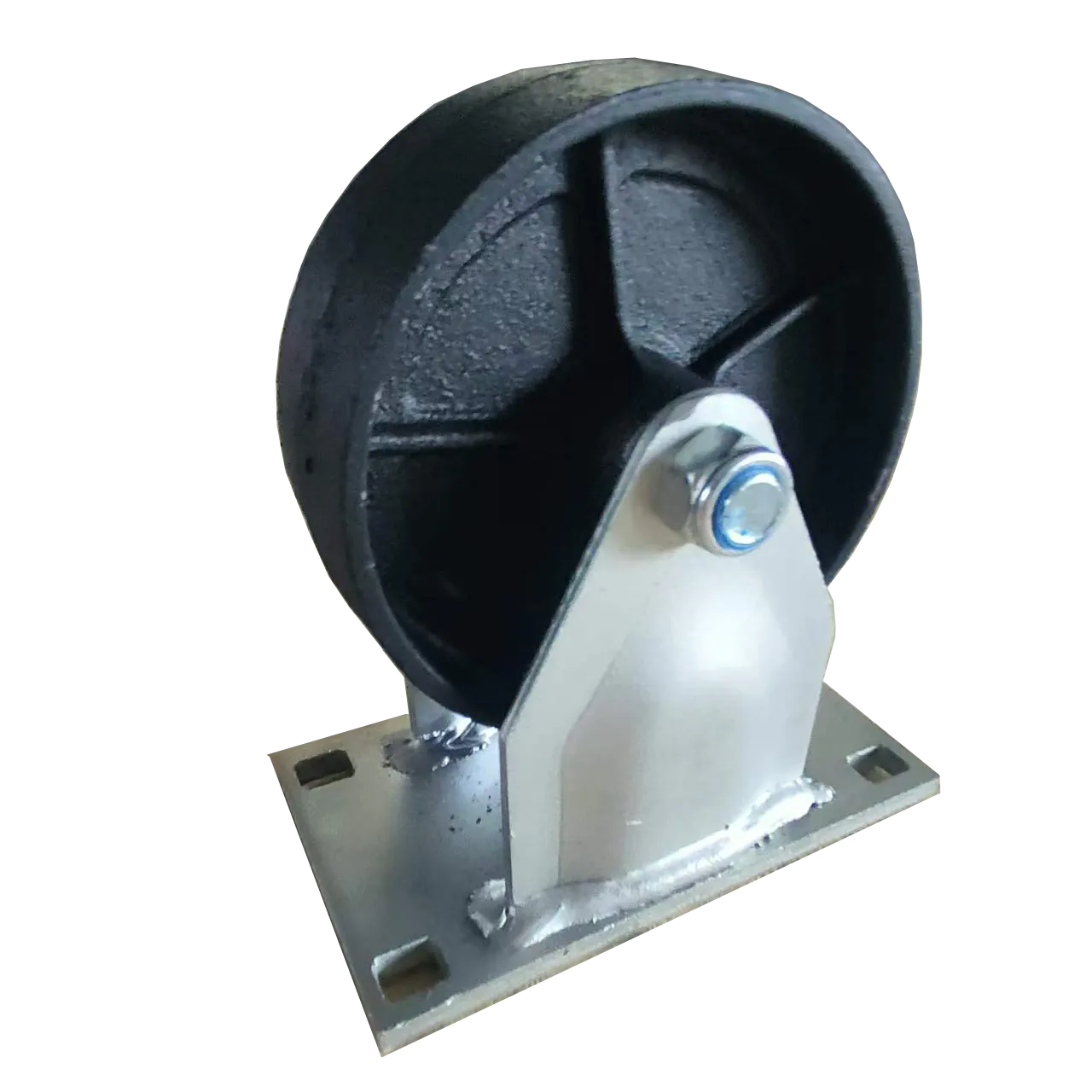Introduction
Choosing the right waste bin castors is crucial in waste management as it enhances efficiency and extends the lifespan of waste bins. With increasing waste disposal needs, suitable castors not only reduce workers’ physical strain but also significantly improve handling efficiency. When selecting castors, several key factors must be considered to ensure they are well-suited for specific usage environments.
Factors to Consider When Choosing the Right Castors
- Load Capacity: The castors should be chosen based on the bin’s capacity and expected weight. For example, a 240L waste bin typically requires castors that can support 200-300kg.
- Material: Common materials include rubber, nylon, and polyurethane. For outdoor use, corrosion-resistant rubber castors are recommended to enhance durability and resistance to aging.
- Diameter: Castor diameters generally range from 100-200mm. Larger diameters allow for easier maneuverability but take up more space.
- Mounting Method: Options include bolt-fixed and clip-on castors. A stable and easy-to-replace mounting method is crucial.
- Brake Function: At least one castor should have a brake to prevent the waste bin from moving unintentionally.
- Noise Control: Low-noise castors help minimize operational noise, making them suitable for residential areas without disturbing the surrounding environment.
Choosing the right castors can improve operational efficiency by 15-30% and extend the lifespan of waste bins by 1-2 years. Regular inspection and maintenance, conducted every 3-6 months, ensure long-term efficient performance.
Definition and Importance of Waste Bin Castors
Waste bin castors are wheels specifically designed for waste and recycling containers, facilitating easy mobility and efficient waste management. These castors are typically made of durable materials that can withstand heavy loads and harsh outdoor conditions. Their main components include:
- Wheel: Common materials include rubber, polyurethane, or nylon.
- Bracket: Connects the wheel to the container, typically made of steel or stainless steel.
- Bearing: Ensures smooth wheel rotation, often using precision ball bearings.
- Brake: An optional locking mechanism to enhance stability.
Importance of Waste Bin Castors
- Improved Ergonomics: Reduces the need for lifting and pushing heavy loads, making handling easier.
- Increased Productivity: Mobile waste bins allow for more efficient waste collection.
- Enhanced Safety: Reduces physical strain on workers, lowering the risk of injuries.
- Extended Bin Lifespan: Prevents damage caused by dragging the bins.
- Better Space Utilization: Enables easy movement of waste bins, improving space management.
- Regulatory Compliance: Helps meet waste management regulations.
Common Applications
- Residential curbside waste/recycling bins (120-360L capacity).
- Commercial waste bins (500-1100L capacity).
- Industrial waste containers (1-30 cubic yards).
- Specialized medical/hazardous waste bins.
Studies show that using wheeled waste bins can reduce workplace injury risks by up to 30% while improving waste collection efficiency by 15-20% compared to non-wheeled containers.
Factors to Consider When Choosing the Right Waste Bin Castors
Choosing the right waste bin castors is crucial for effective waste management. Different types of castors are suited for various bins and environments, so multiple factors must be considered when making a selection.
Load Capacity
Load capacity is one of the most important factors when selecting waste bin castors. It is essential to choose castors that can support the weight of the bin based on its size and expected load. Common load capacities range from 150kg to 500kg, ensuring the castors can handle the bin’s weight without damage or instability.
Wheel Diameter
The diameter of the wheels directly affects the bin’s maneuverability. Typically, wheel diameters range from 125mm to 250mm. Larger diameters help overcome obstacles, making the bin easier and more stable to operate.
Material Durability
The durability of the castor material is crucial. Rubber and polyurethane are common materials, as they can withstand outdoor environments and frequent use. Metal wheel cores provide additional strength and durability, making them ideal for demanding environments.
Rust Resistance
For outdoor use, rust resistance is especially important. Zinc-plated or stainless steel castors offer excellent corrosion resistance, ensuring they do not rust even in humid or harsh conditions.
Brake Function
Castors with brakes help keep waste bins securely in place, enhancing safety. Choosing swivel castors with braking mechanisms ensures stability when the bin is parked, preventing unwanted movement during transportation.
Noise Control
Noise control is essential in residential or quiet environments. Rubber tires are particularly effective at reducing noise, minimizing sound pollution when moving the waste bin.
Floor Protection
The material of the castors should also be chosen with floor protection in mind. Softer materials like rubber reduce the risk of scratching or damaging floors, making them ideal for indoor use or environments where floor integrity is a priority.
Ease of Cleaning
Selecting castors that are easy to clean is important, especially for waste bin applications. Sealed bearings help prevent dirt, debris, and waste from entering the castors, ensuring they remain clean and hygienic.
Compliance with Standards
Finally, it is essential to choose castors that meet industry standards such as EN 840-5 and RAL 951/1. This ensures the castors’ quality and safety, maintaining excellent performance over long-term use.
Advantages of Waste Bin Castors
Waste bin castors play a crucial role in waste management and offer numerous benefits.
High Durability
Waste bin castors are made from high-strength materials such as reinforced nylon, rubber, or polyurethane, allowing them to withstand frequent use and heavy loads. High-quality castors can support 200-300kg per wheel, ensuring long-term durability without damage.
Corrosion Resistance
To withstand humid environments and waste exposure, many castors are made with stainless steel or zinc-plated components. These materials effectively prevent rust and corrosion, extending the lifespan of the castors.
High Maneuverability
Swivel castors offer 360-degree rotation, allowing easy navigation in tight spaces. Typically, bins are equipped with two swivel wheels and two fixed wheels for optimal balance and mobility.
Floor Protection
Soft tires (such as rubber) help prevent floor damage. Non-marking designs are also available for indoor use, ensuring that floors remain clean and undamaged.
Noise Reduction
Rubber tires absorb vibrations and reduce noise when moving waste bins, making them ideal for noise-sensitive environments.
Easy Maintenance
Many castors are designed with sealed bearings and simple structures, making them easy to clean and maintain. This reduces maintenance costs and downtime.
Safety Features
Many castors come with full-lock braking systems, keeping waste bins securely in place when stationary and preventing unintended movement, thus improving safety.
Variety of Sizes
Castors are available in different diameters, ranging from 75mm to 200mm, to suit various waste bin sizes and load requirements, providing greater flexibility in selection.
Industry Compliance
High-quality castors meet industry standards such as EN 840, ensuring safety and reliability when moving waste bins.
Cost-Effectiveness
With their durable construction and long lifespan, waste bin castors provide a cost-effective solution, making them ideal for large-scale waste management systems.
Conclusion
Choosing the right skip bin castors is essential for effective waste management. The correct castors improve efficiency, safety, and extend the equipment’s lifespan.
Key Considerations for Choosing Skip Bin Castors
-
Weight Capacity: Match the castor’s weight capacity with the size of the skip bin. For example, a 240L skip bin full of waste may weigh 150-200kg, so castors should support at least 250kg.
-
Material: Different materials fit different needs. Rubber is durable for outdoor use, polyurethane is quieter indoors, and nylon is affordable for lighter loads.
-
Diameter: Larger castors (5-6 inches) work well outdoors as they handle obstacles better, while smaller castors (3-4 inches) are better for indoor spaces.
-
Locking Mechanism: Castors with locks prevent accidental movement, especially on sloped or uneven surfaces.
-
Noise Control: Choose castors with shock-absorbing features to minimize noise. This is important for places like hospitals.
-
Corrosion Resistance: For skip bins exposed to harsh weather or chemicals, stainless steel or galvanized castors are best due to their resistance to rust.
-
Maintenance Requirements: Sealed bearing castors require less frequent maintenance, making them ideal for high-frequency use.
Benefits of Using the Right Castors
-
Efficiency Boost: The right castors can improve waste management efficiency by 30-40%.
-
Safety Improvement: Choosing the correct castors can reduce workplace injuries by up to 45%.
In conclusion, selecting the right castors enhances operational performance and safety, leading to a more efficient and safer waste management process.
For more details on the accessories provided by Aresbins, please contact us.






Recent Comments